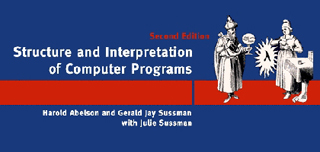Structure and Interpretation of Computer Programs - Wikipedia
"a computer science textbook by Massachusetts Institute of Technology professors Harold Abelson and Gerald Jay Sussman with Julie Sussman. It is known as the "Wizard Book" in hacker culture.[1] It teaches fundamental principles of computer programming, including recursion, abstraction, modularity, and programming language design and implementation."
Source is a family of languages, designed for the textbook Structure and Interpretation of Computer Programs, JavaScript Adaptation (SICP JS) and supported by the Source Academy system. The languages are called Source §1, Source §2, Source §3 and Source §4, corresponding to the respective chapters 1, 2, 3 and 4 of the textbook. Each previous Source language is a sublanguage of the next, and all Source languages are sublanguages of JavaScript. (Chapter 5 does not require any features beyond Source §4.) This webpage contains the description of the Source languages and the libraries they come with.
Source Academy @GitHub: "Online experiential environment for computational thinking"
Source Academy.org
The Source Academy is a computer-mediated learning environment for studying the structure and interpretation of computer programs. Students write and run their programs in their web browser, using sublanguages of JavaScript called Source, designed for the textbook Structure and Interpretation of Computer Programs, JavaScript Edition.
Video Lectures | Structure and Interpretation of Computer Programs | Electrical Engineering and Computer Science | MIT OpenCourseWare



